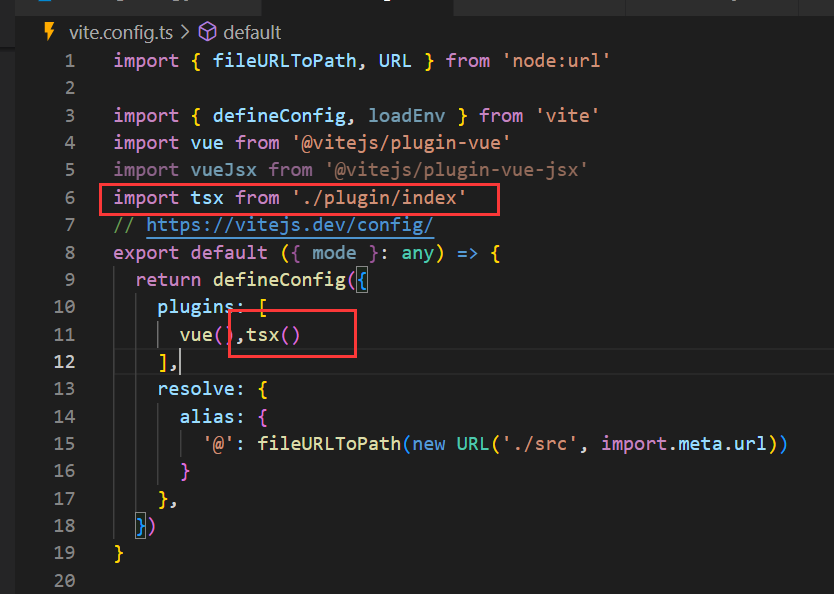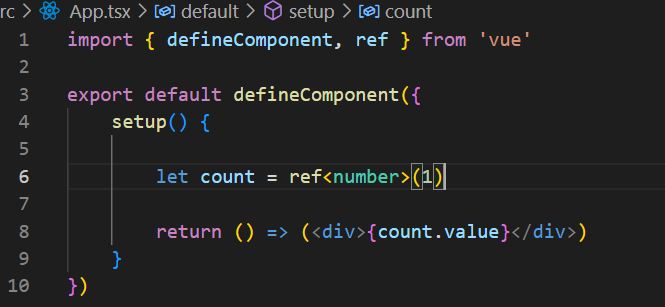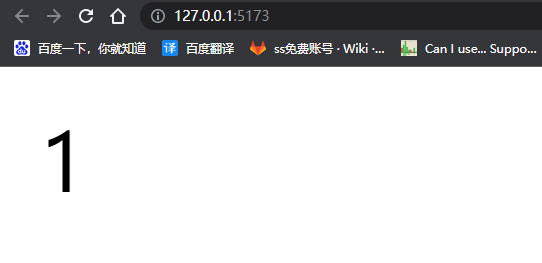25-TSX模版
大约 3 分钟
完整版用法 请看 @vue/babel-plugin-jsx - npm
我们之前呢是使用 Template 去写我们模板。现在可以扩展另一种风格 TSX 风格
vue2 的时候就已经支持 jsx 写法,只不过不是很友好,随着 vue3 对 typescript 的支持度,tsx 写法越来越被接受
1.安装插件
npm install @vitejs/plugin-vue-jsx -D
vite.config.ts 配置 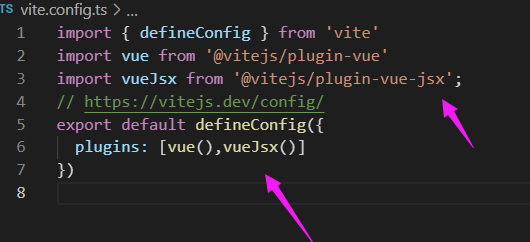
import { defineConfig } from 'vite'
import vue from '@vitejs/plugin-vue'
import vueJsx from '@vitejs/plugin-vue-jsx';
// https://vitejs.dev/config/
export default defineConfig({
plugins: [vue(),vueJsx()]
})
2.修改 tsconfig.json 配置文件
"jsx": "preserve",
"jsxFactory": "h",
"jsxFragmentFactory": "Fragment",
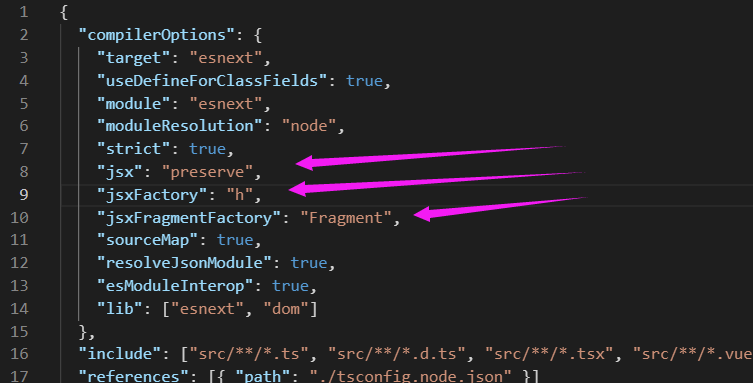
配置完成就可以使用啦
在目录新建一个 xxxxxx.tsx 文件
3.使用 TSX
方法一 返回一个渲染函数
export default function () {
return (<div>小满</div>)
}
方法二 optionsAPI
import { defineComponent } from "vue";
export default defineComponent({
data() {
return {
age: 23
}
}, render() {
return (<div>{this.age}</div>)
}
})
方法三 setup 函数模式
import { defineComponent } from "vue";
export default defineComponent({
setup(props, ctx) {
return ()=>(<div>小满setup</div>)
},
})
tsx 与 template 不同
Tips:
- tsx 不会自动解包使用 ref 加.vlaue ! ! !
- v-if 不支持 三元表达式去代替
- map 去代替 v-for
- v-bind {}代替
- props emit
tsx 支持 v-model 的使用
import { ref } from 'vue'
let v = ref<string>('')
const renderDom = () => {
return (
<>
<input v-model={v.value} type="text" />
<div>
{v.value}
</div>
</>
)
}
export default renderDom
v-show
import { ref } from 'vue'
let flag = ref(false)
const renderDom = () => {
return (
<>
<div v-show={flag.value}>景天</div>
<div v-show={!flag.value}>雪见</div>
</>
)
}
export default renderDom
v-if 是不支持的
import { ref } from 'vue'
let flag = ref(false)
const renderDom = () => {
return (
<>
{
flag.value ? <div>景天</div> : <div>雪见</div>
}
</>
)
}
export default renderDom
v-for 也是不支持的
需要使用 Map
import { ref } from 'vue'
let arr = [1,2,3,4,5]
const renderDom = () => {
return (
<>
{
arr.map(v=>{
return <div>${v}</div>
})
}
</>
)
}
export default renderDom
v-bind 使用
直接赋值就可以
import { ref } from 'vue'
let arr = [1, 2, 3, 4, 5]
const renderDom = () => {
return (
<>
<div data-arr={arr}>1</div>
</>
)
}
export default renderDom
v-on 绑定事件 所有的事件都按照 react 风格来
- 所有事件有 on 开头
- 所有事件名称首字母大写
const renderDom = () => {
return (
<>
<button onClick={clickTap}>点击</button>
</>
)
}
const clickTap = () => {
console.log('click');
}
export default renderDom
Props 接受值
import { ref } from 'vue'
type Props = {
title:string
}
const renderDom = (props:Props) => {
return (
<>
<div>{props.title}</div>
<button onClick={clickTap}>点击</button>
</>
)
}
const clickTap = () => {
console.log('click');
}
export default renderDom
App.vue
<template>
<div>
<xiaoman title="小满props"></xiaoman>
</div>
</template>
Emit 派发
type Props = {
title: string
}
const renderDom = (props: Props,content:any) => {
return (
<>
<div>{props.title}</div>
<button onClick={clickTap.bind(this,content)}>点击</button>
</>
)
}
const clickTap = (ctx:any) => {
ctx.emit('on-click',1)
}
Slot
const A = (props, { slots }) => (
<>
<h1>{ slots.default ? slots.default() : 'foo' }</h1>
<h2>{ slots.bar?.() }</h2>
</>
);
const App = {
setup() {
const slots = {
bar: () => <span>B</span>,
};
return () => (
<A v-slots={slots}>
<div>A</div>
</A>
);
},
};
// or
const App = {
setup() {
const slots = {
default: () => <div>A</div>,
bar: () => <span>B</span>,
};
return () => <A v-slots={slots} />;
},
};
// or you can use object slots when `enableObjectSlots` is not false.
const App = {
setup() {
return () => (
<>
<A>
{{
default: () => <div>A</div>,
bar: () => <span>B</span>,
}}
</A>
<B>{() => "foo"}</B>
</>
);
},
};
加餐实现一个 vite 插件解析 tsx
tsx的底层实现,就是利用 babel 做了一个语法转化
1.需要用到的第三方插件
npm install @vue/babel-plugin-jsx
npm install @babel/core
npm install @babel/plugin-transform-typescript
npm install @babel/plugin-syntax-import-meta
npm install @types/babel__core
插件代码
import type { Plugin } from 'vite'
import * as babel from '@babel/core'; //@babel/core核心功能:将源代码转成目标代码。
import jsx from '@vue/babel-plugin-jsx'; //Vue给babel写的插件支持tsx v-model等
export default function (): Plugin {
return {
name: "vite-plugin-tsx",
config (config) {
return {
esbuild:{
include:/\.ts$/
}
}
},
async transform(code, id) {
if (/.tsx$/.test(id)) {
//@ts-ignore
const ts = await import('@babel/plugin-transform-typescript').then(r=>r.default)
const res = babel.transformSync(code,{
plugins:[jsx,[ts, { isTSX: true, allowExtensions: true }]], //添加babel插件
ast:true, // ast: 抽象语法树,源代码语法结构的一种抽象表示。babel内部就是通过操纵ast做到语法转换。
babelrc:false, //.babelrc.json
configFile:false //默认搜索默认babel.config.json文件
})
return res?.code //code: 编译后的代码
}
return code
}
}
}
